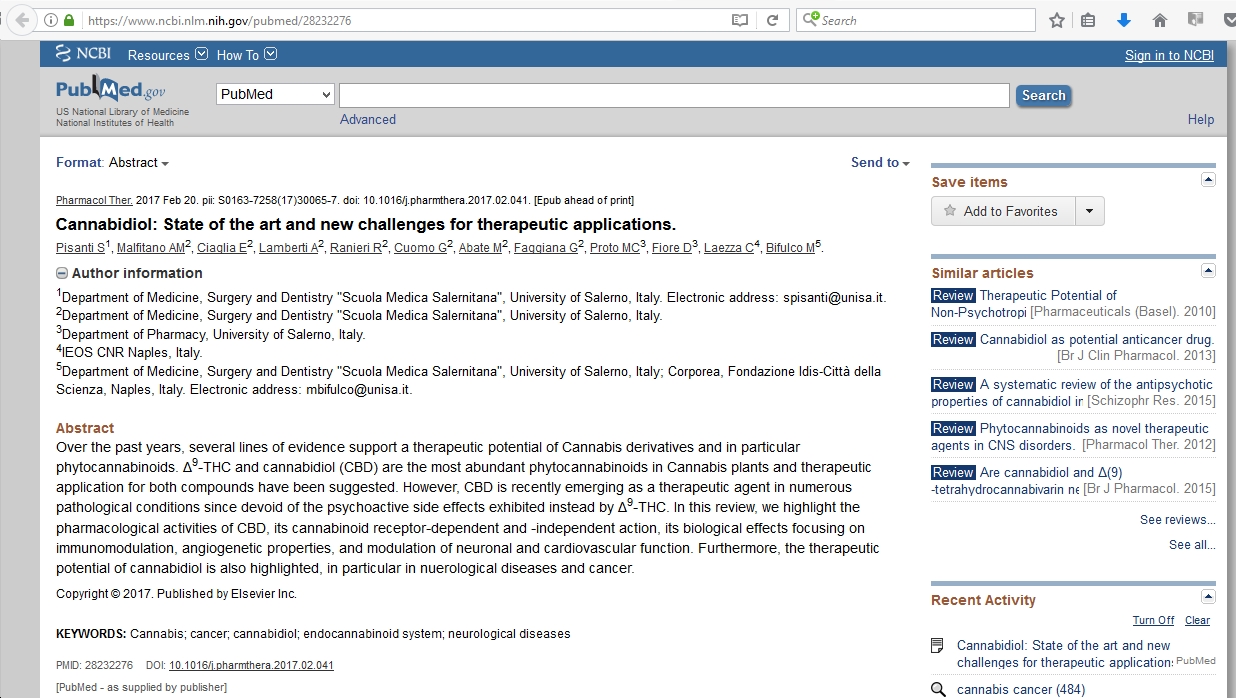Author information
- 1Department of Medicine, Surgery and Dentistry “Scuola Medica Salernitana”, University of Salerno, Italy. Electronic address: spisanti@unisa.it.
- 2Department of Medicine, Surgery and Dentistry “Scuola Medica Salernitana”, University of Salerno, Italy.
- 3Department of Pharmacy, University of Salerno, Italy.
- 4IEOS CNR Naples, Italy.
- 5Department of Medicine, Surgery and Dentistry “Scuola Medica Salernitana”, University of Salerno, Italy; Corporea, Fondazione Idis-Città della Scienza, Naples, Italy. Electronic address: mbifulco@unisa.it.
Abstract
Over the past years, several lines of evidence support a therapeutic potential of Cannabis derivatives and in particular phytocannabinoids. Δ9-THC and cannabidiol (CBD) are the most abundant phytocannabinoids in Cannabis plants and therapeutic application for both compounds have been suggested. However, CBD is recently emerging as a therapeutic agent in numerous pathological conditions since devoid of the psychoactive side effects exhibited instead by Δ9-THC. In this review, we highlight the pharmacological activities of CBD, its cannabinoid receptor-dependent and -independent action, its biological effects focusing on immunomodulation, angiogenetic properties, and modulation of neuronal and cardiovascular function. Furthermore, the therapeutic potential of cannabidiol is also highlighted, in particular in nuerological diseases and cancer.
KEYWORDS:
Cannabis; cancer; cannabidiol; endocannabinoid system; neurological diseases
- PMID:
- 28232276
- DOI:
- 10.1016/j.pharmthera.2017.02.041
